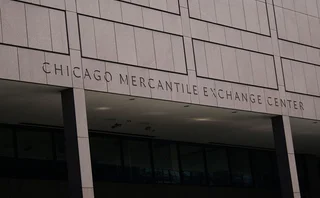
What credit auction friction says about the OTC market
Benefits of risk bifurcation threatened by collateral conflicts
Credit risk auctions are a neat case study of the ways in which capital burdens and pricing complexity are changing the over-the-counter market.
They have become a popular tool when executing large, long-dated, credit-intensive swaps. These trades generate big credit valuation adjustment (CVA) capital charges, but the actual cost depends heavily on the existing book a dealer has with a client, a sector, or geography.
One corporate treasurer who recently executed a $400 million US dollar/euro cross-currency swap claims to have been quoted CVA charges that ranged from 16 basis points to 40bp.
On the face of it, then, trying to bifurcate the market and credit components of the trade is a no-brainer. The way it works in practice is that one or more dealers will execute the trade and then organise an auction. The bidding banks will step into the trade, facing the client on one side and the original dealer or dealers on the other. For the banks sitting in the middle, the two sides of the trade offset, meaning they bear no market risk but are accepting the client's uncollateralised counterparty risk.
In theory, the client gets a better all-in price, but as banks have become more sensitive to the various elements of a swap's price, the logic of the auction has started to unravel. Consider a case in which the original dealer has agreed to wait for weeks or months before auctioning the trade – perhaps to ensure information about the client's trade does not leak immediately into the market – and in which the net present value of the trade has moved against the client.
Here, the original dealer will be in-the-money – meaning credit risk-bearing dealers will be asked to immediately accept uncollateralised counterparty exposure and to post margin to the market risk-bearing bank. This puts a spotlight on the collateral agreements that exist between the dealers: even if one of the bidding banks has an appetite for the client's counterparty risk, the original dealer may not like the collateral the bank would be posting. These issues have started to jeopardise auctions over the past year, dealers say.
It is another example of the ways in which a lack of fungibility in the OTC market is eroding efficiency. The big picture worries some senior traders: "Increasingly, the price a client might be quoted for the market risk on a trade is overwhelmed by the multitude of valuation adjustments they have to pay on top. If we're not careful, there will come a point soon where clients turn round and say ‘Forget this – I'll find another way to hedge'," one head of fixed income told Risk recently.
Only users who have a paid subscription or are part of a corporate subscription are able to print or copy content.
To access these options, along with all other subscription benefits, please contact info@risk.net or view our subscription options here: http://subscriptions.risk.net/subscribe
You are currently unable to print this content. Please contact info@risk.net to find out more.
You are currently unable to copy this content. Please contact info@risk.net to find out more.
Copyright Infopro Digital Limited. All rights reserved.
As outlined in our terms and conditions, https://www.infopro-digital.com/terms-and-conditions/subscriptions/ (point 2.4), printing is limited to a single copy.
If you would like to purchase additional rights please email info@risk.net
Copyright Infopro Digital Limited. All rights reserved.
You may share this content using our article tools. As outlined in our terms and conditions, https://www.infopro-digital.com/terms-and-conditions/subscriptions/ (clause 2.4), an Authorised User may only make one copy of the materials for their own personal use. You must also comply with the restrictions in clause 2.5.
If you would like to purchase additional rights please email info@risk.net
More on Interest rate markets
Sharper economic picture sets scene for dollar swaps rebound
Razor-thin bid/offer spreads and slim post-April trading volumes give way to an uptick in August
New benchmark to give Philippine peso swaps a fillip, post-Isda add
Isda to include new PHP overnight rate and Indonesia’s Indonia in its next definitions update
SABR convexity adjustment for an arithmetic average RFR swap
A model-independent convexity adjustment for interest rate swaps is introduced
NatWest Securities US Treasury trading head departs
Jason Sable joined the UK bank in January 2022 from BNP Paribas
CME in talks to clear term SOFR basis swaps
US clearing house has held discussions with some dealers about clearing term SOFR-SOFR packages
Risky caplet pricing with backward-looking rates
The Hull-White model for short rates is extended to include compounded rates and credit risk
The curious case of backward short rates
A discretisation approach for both backward- and forward-looking interest rate derivatives is proposed
Cross-currency swaps will use RFRs on both legs, says JP exec
Despite slow start, all-RFR swaps will become the market standard within a year, according to Tom Prickett








